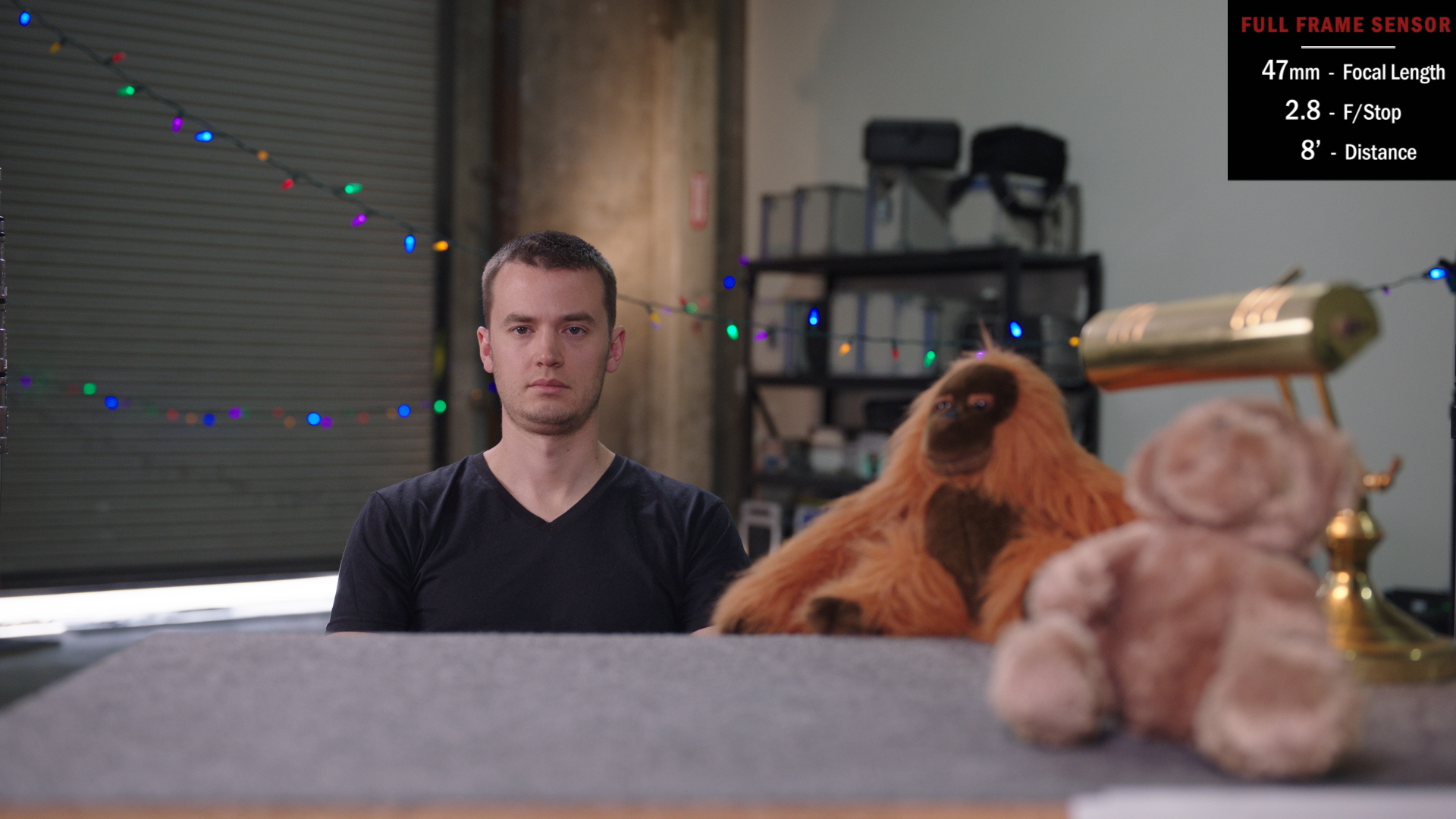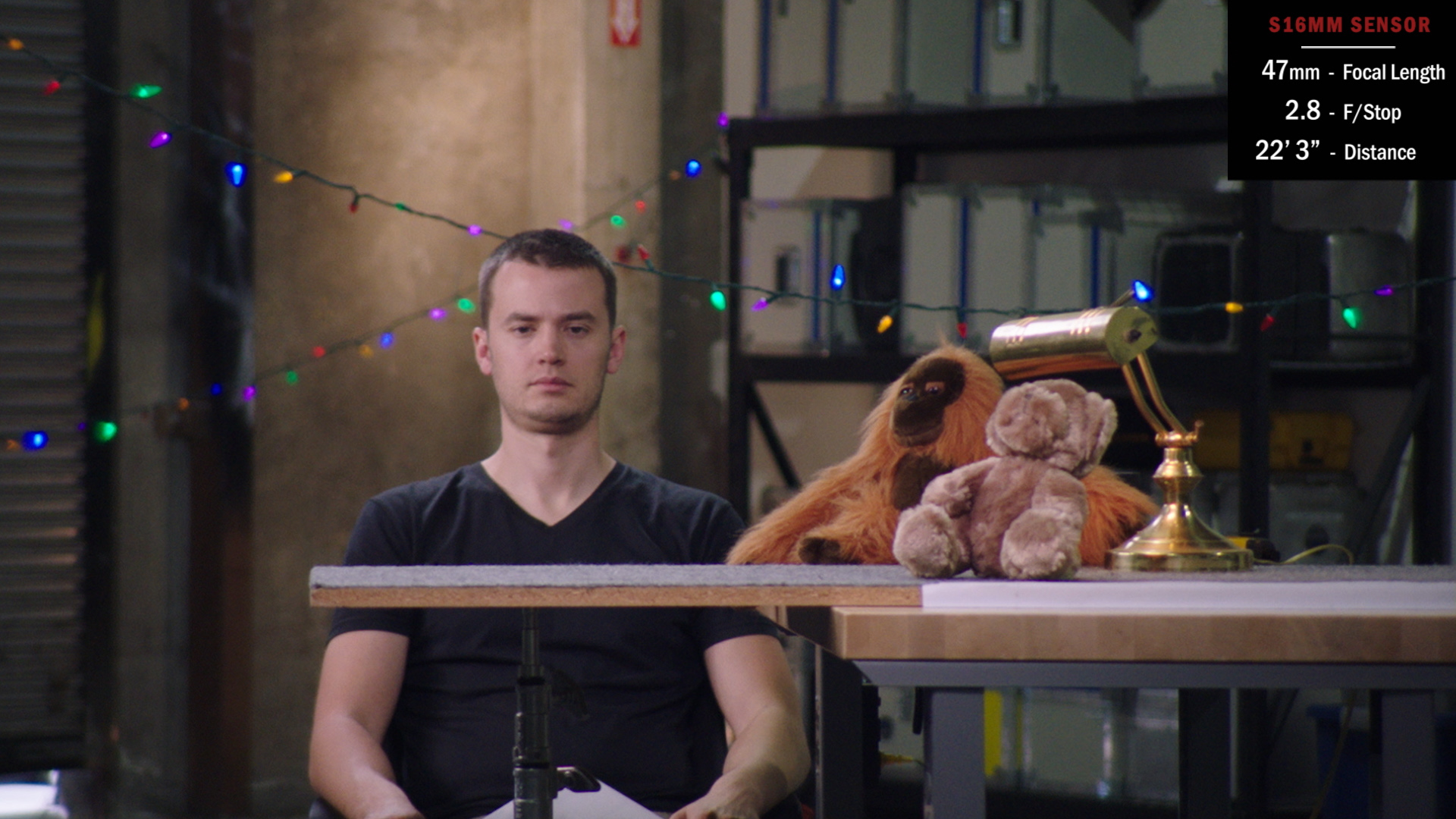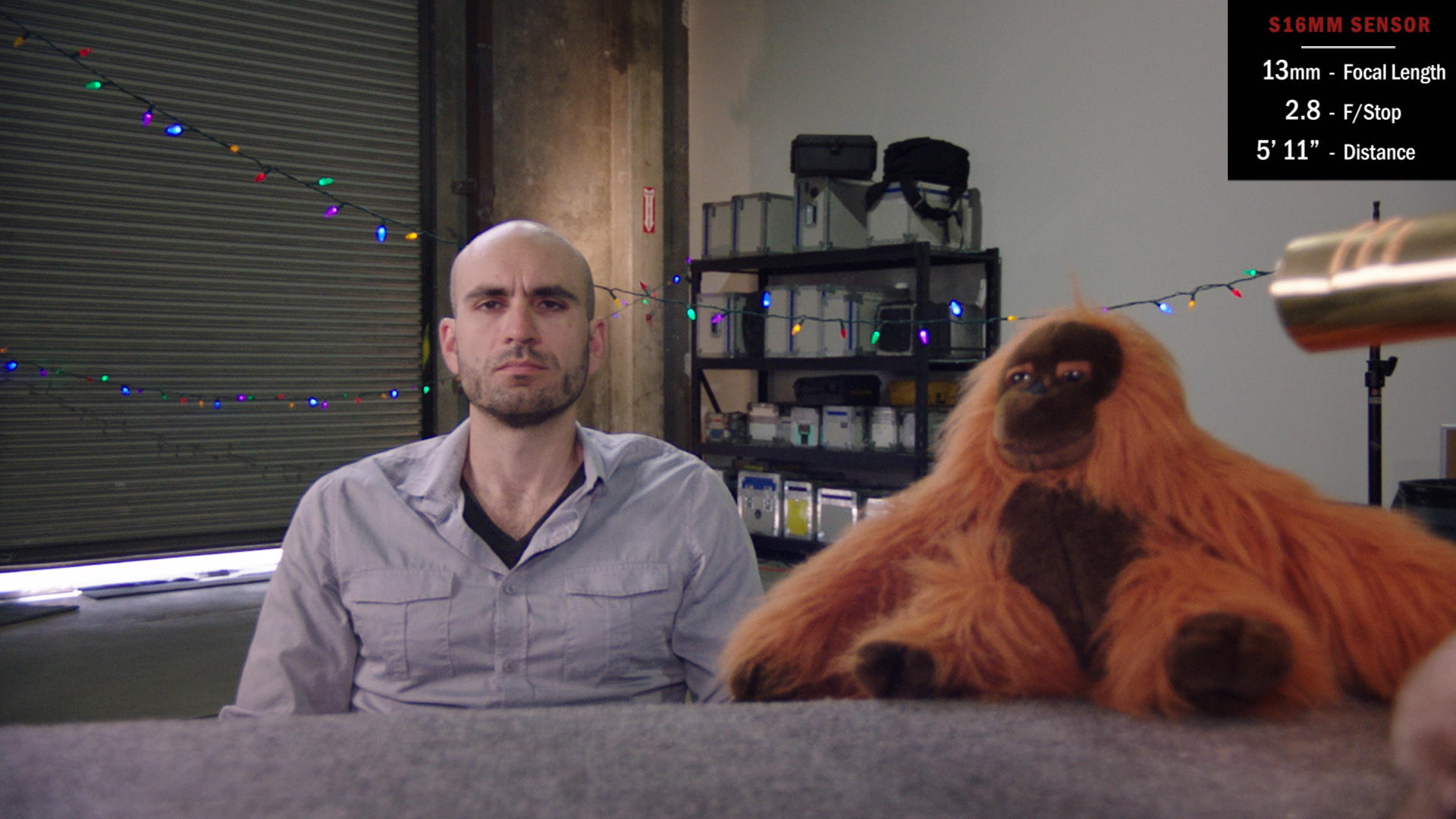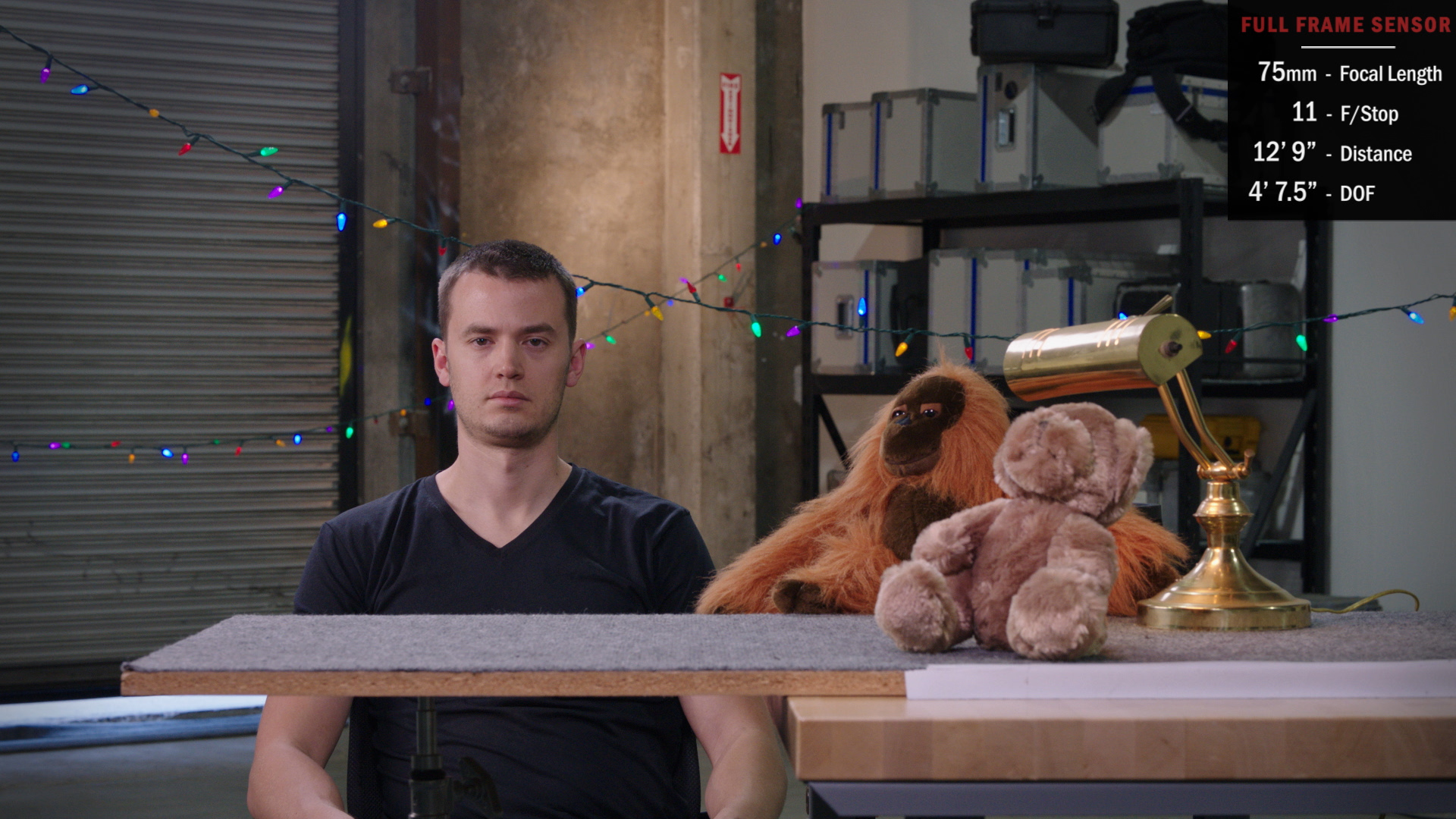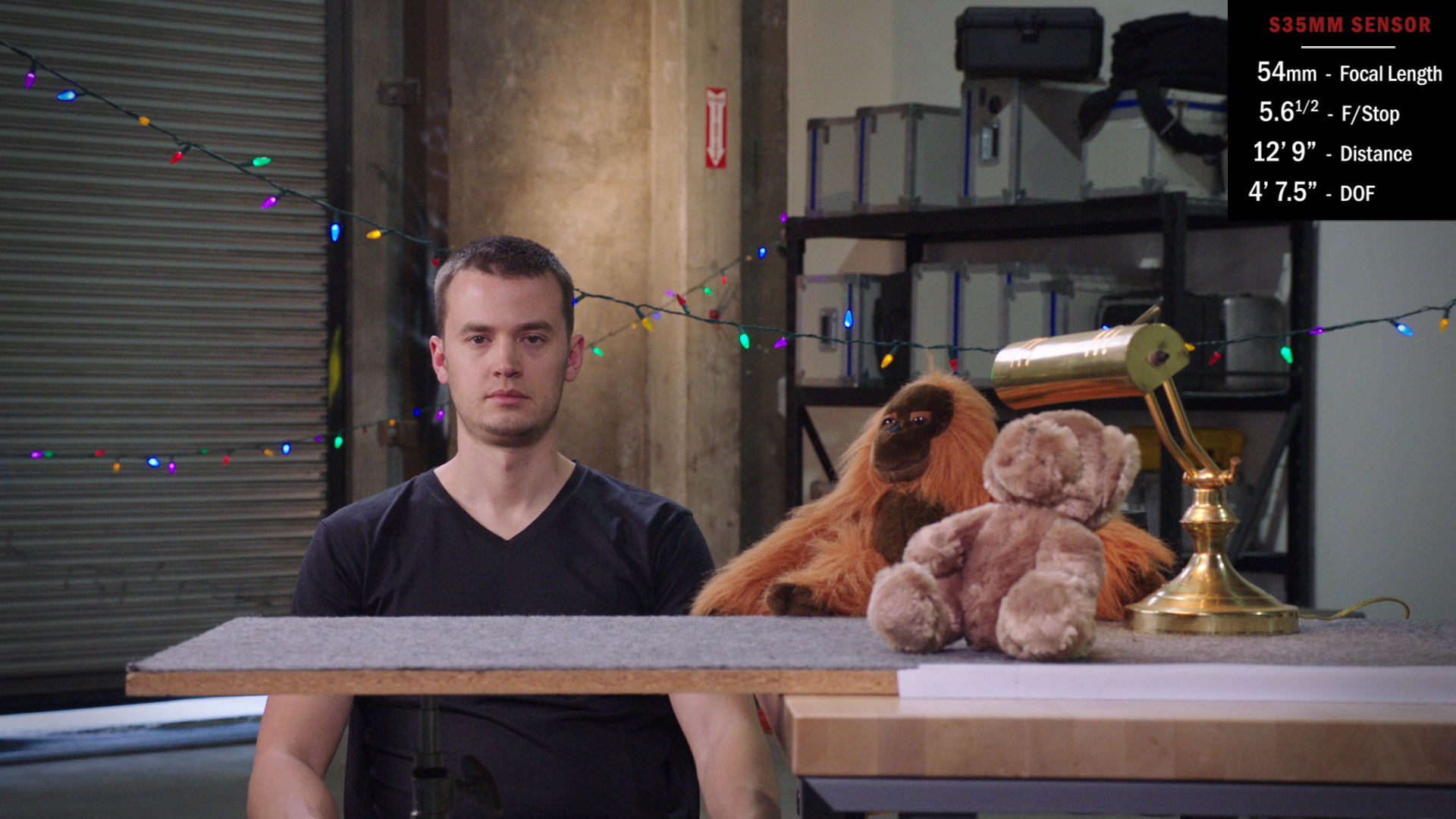Full Frame Cinematography • A Sensor Size Comparison
@aschmidtdp here. Full Frame, also referred to as Large Format (LF), cinematography has increased in popularity as more manufacturers have released digital cinema cameras with these larger sensors such as the ARRI Alexa Mini LF, SONY Venice, and CANON C700 FF. A larger sensor can offer aesthetic differences when compared to other sensor sizes. But how distinct these differences are lies within the eye of the beholder. We formulated a comparison test to demonstrate how sensor size can be a determining factor when making creative decisions for any given story. This test evaluated how a camera’s sensor size effects the Depth-of-Field and perceived spatial relationship between objects within the two-dimensional frame (compression). The test compares three sensor sizes: Large Format, Super 35mm, and Super 16mm.
LARGE FORMAT CAMERA SPECS
camera • ARRI ALEXA LF
resolution • 4.5K: 4448 x 2502*
image area • 36.70mm x 20.62mm*
(0x) crop factor
SUPER 35 CAMERA SPECS
camera • ARRI ALEXA Mini
resolution • 3.2K: 3200 x 1800
image area • 26.40mm x 14.85mm
(1.4x) crop factor
SUPER 16 CAMERA SPECS
camera • ARRI ALEXA Mini
resolution • S16HD: 1920 x 1080
image area • 13.20mm x 7.43m
(2.8x) crop factor
*The Alexa LF was masked in post for a 1:1.78 aspect ratio which allowed us to achieve a consistent Field-of-View to compare each image.
TEST 1
OBJECTIVE: Demonstrate any differences in the visually perceived spatial relationship between foreground, middle-ground, and background objects for each sensor size.
PROCEDURE: Each camera will maintain the same Focal Length and F-Stop. Distance is mathematically compensated to match the Field-of-View for each sensor size.
Other focal lengths for this test can be scene in the top video
Sensor • Full Frame
Focal Length • 47mm
Distance • 8’
F-Stop • f/2.8
FOV • 6’ 3” x 4’ 4.2”
Sensor • Super 36
Focal Length • 47mm
Distance • 11’1”
F-Stop • f/2.8
FOV • 6’ 3” x 4’ 4.2”
Sensor • Super 16
Focal Length • 47mm
Distance • 22’ 3”
F-Stop • f/2.8
FOV • 6’ 3” x 4’ 4.2”
In this test, we used an image overlay to keep the subject’s body size and position consistent in each frame. When using the same focal length, notice how a larger sensor creates more spatial depth between the wall in the background and the monkey in the foreground. This provides a dynamic three-dimensional feeling which places the viewer in the middle of the environment. This is directly attributed to the sensor’s given size, and it’s correlation to the focal length of a certain lens and how that lens renders depth perception. Because of this, a 47mm lens is considered a wide lens for the Large Format sensor; a medium lens for the Super 35 and a long lens for Super 16. In practical application, this could effect sensor and lens choice if one is shooting primarily in practical locations with limited wall space. Walls limit the distance the camera can move back for a wider field-of-view. And widening the focal length can increase distortion in an image (which can get distracting). So if one wanted to shoot primarily using wide angle lens characteristics but had limited location space, you might choose to shoot with a larger sensor.
TEST 2
OBJECTIVE: Demonstrate the difference in Depth-of-Field for each sensor size.
PROCEDURE: Each camera will maintain the same Distance and F-Stop. Focal Length is mathematically compensated to match the Field-of-View for each sensor size.
Other focal lengths for this test can be scene in the top video
Sensor • Full Frame
Focal Length • 35mm
Distance • 5’ 11”
F-Stop • f/2.8
FOV • 6’ 3” x 4’ 4.2”
Sensor • Super 35
Focal Length • 25mm
Distance • 5’ 11”
F-Stop • f/2.8
FOV • 6’ 3” x 4’ 4.2”
Sensor • Super 16
Focal Length • 13mm
Distance • 5’ 11”
F-Stop • f/2.8
FOV • 6’ 3” x 4’ 4.2”
Depth-of-Field is another aspect that effects objects spatial relationship within a frame. A larger sensor has a wider circle-of-confusion, which results in a narrow depth-of-field. In this test the spatial relationship between the objects appear consistent in each image. However, notice the wall in the background and monkey in the foreground appear more out of focus when shooting with a larger sensor size. This is due to the correlation between focal length and depth-of-field: on a large sensor, a 35mm lens has a relatively wide field-of-view when compared to the Super 35 and Super 16 sensor sizes, but carries over the optical qualities of a 35mm lens, including depth-of-field. And because the longer the focal length the shallower the depth-of-field, this means that Large Format sensors tend to lean in to the shallow depth-of-field look at even wider focal lengths than can usually be achieved in traditional Super 35 format. In practical application this could be useful when shooting projects intended for TV. It will be easier for a story-teller to isolate specific subjects using within the frame on when viewed on a smaller screen.
TEST 3
OBJECTIVE: Demonstrate the “look” provided by the sensor’s image size is a factor of relationships between Image Circle and F-Stop that can be interchanged, to a certain degree, to create a similar image for each sensor size.
PROCEDURE: Each camera will maintain the same Distance. Focal length and f/stop are mathematically compensated to match the Depth-of-Field and Field-of-View for each sensor size.
Sensor • Full Frame
Focal Length • 75mm
Distance • 12’ 9”
F-Stop • f/11
DOF • 4’ 7.5”
FOV • 6’ 3” x 4’ 4.2”
Sensor • Super 35
Focal Length • 54mm
Distance • 12’ 9”
F-Stop • f/5.6½
DOF • 4’ 7.5”
FOV • 6’ 3” x 4’ 4.2”
Sensor • Super 16
Focal Length • 27mm
Distance • 12’ 9”
F-Stop • f/2.8⅓
DOF • 4’ 7.5”
FOV • 6’ 3” x 4’ 4.2”
What’s really interesting is how close an image can aesthetically look despite the sensor’s size. Of course the Large Format sensor looks much sharper and less noisy compared to the Super 16 because of the increased resolution. But if each sensor’s field-of-view is mathematically matched by changing the focal length and f/stop, the spatial relationship between objects appears to match. Practically speaking, if one had complete control over the technical aspects inherent in cameras, lenses, light levels and space, then you could achieve a large format “look” with any sensor size - up to a certain point.
Gear provided by LENSWORKS RENTALS and ALTERNATIVE RENTALS.
Color by Ryan McNeal at RKM STUDIOS.

